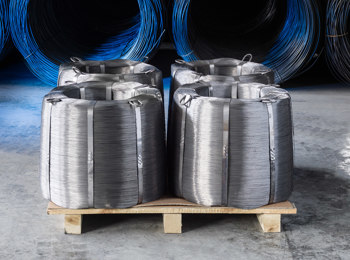elo . 20, 2024 19:44 Back to list
China's Innovative Gabion Box Solutions for Landscape and Erosion Control
Understanding China Gabion Boxes Their Features and Applications
Gabion boxes, essentially wire mesh containers filled with stones or similar materials, have become increasingly popular in various engineering and landscaping projects. In China, the production and application of these structures have gained considerable momentum, thanks to their efficiency and versatility. This article will delve into the characteristics of China gabion boxes, their various applications, and the reasons behind their rising popularity.
What are Gabion Boxes?
Gabion boxes are structures made from hexagonal wire mesh, woven together to form a box shape. These boxes are typically filled with rocks, concrete, or even recycled materials to create a sturdy, durable component for civil engineering and architectural projects. The name gabion originates from the Italian word “gabbione,” which means large cage, alluding to the box-like appearance of these constructions.
Features of Gabion Boxes
1. Durability One of the main features of gabion boxes is their long-lasting nature. Made from high-quality galvanized steel wire or PVC-coated wire, they are highly resistant to corrosion and can withstand harsh weather conditions.
2. Flexibility Gabion boxes offer great flexibility in design and application. Their modular nature allows them to be configured into various shapes and sizes to meet specific project requirements.
3. Eco-friendliness With increasing attention on sustainable construction practices, gabion boxes serve as an environmentally friendly option. They can be filled with natural stones, and their porous nature allows water to flow through, preventing erosion and promoting vegetation growth.
4. Cost-effectiveness Compared to traditional concrete solutions, gabion boxes are often more economical. The materials used for filling can be locally sourced, and their installation requires less complex machinery.
china gabion box

Applications of Gabion Boxes in China
Gabion boxes have found a multitude of applications across China’s landscape, including
1. Erosion Control In regions prone to soil erosion, gabion boxes are employed to stabilize slopes and riverbanks. The structures effectively absorb the energy of water flow and minimize soil displacement.
2. Retaining Walls These boxes are increasingly used in the construction of retaining walls, providing support for soil at different elevations. The flexibility in design allows for creative solutions tailored to geographical challenges.
3. Flood Control In flood-prone areas, gabion boxes are integrated into flood defense systems. They can be stacked to create barriers that help redirect water flow and protect infrastructure from potential damage.
4. Landscaping and Aesthetics Beyond their practical functions, gabion boxes are also utilized in landscaping projects. They can be aesthetically pleasing, serving as decorative elements or outdoor seating arrangements, blending naturally into the environment.
5. Noise Barriers Gabion walls can act as effective noise barriers along highways or industrial areas. Their dense composition and structure help to absorb and deflect sound.
Conclusion
The rising popularity of gabion boxes in China reflects a broader trend towards sustainable and efficient construction practices. Their durability, flexibility, and eco-friendliness make them an attractive option for various projects in both urban and rural settings. Whether used for erosion control, landscaping, or as retaining walls, gabion boxes present a modern solution to age-old engineering challenges. As China's infrastructure continues to grow, the application of gabion technology is likely to expand further, showcasing its importance in effective, environmentally conscious construction.
-
Visualizing Gabion 3D Integration in Urban Landscapes with Rendering
NewsJul.23,2025
-
The Design and Sustainability of Gabion Wire Mesh Panels
NewsJul.23,2025
-
The Acoustic Performance of Gabion Sound Barriers in Urban Environments
NewsJul.23,2025
-
Mastering the Installation of Galvanized Gabion Structures
NewsJul.23,2025
-
Gabion Boxes: Pioneering Sustainable Infrastructure Across the Globe
NewsJul.23,2025
-
Custom PVC Coated Gabion Boxes for Aesthetic Excellence
NewsJul.23,2025
-
Installation Tips for Gabion Wire Baskets in Erosion Control Projects
NewsJul.21,2025






